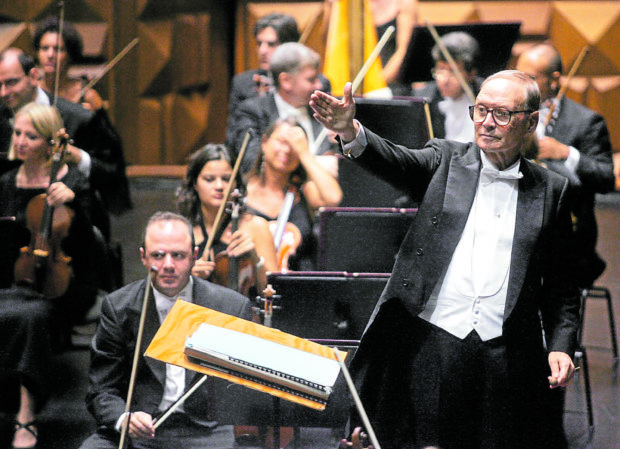
Philippine performing artists paid tribute to Italian composer Ennio Morricone, one of the world’s best known and most acclaimed film scorers, particularly known for his iconic music for the Sergio Leone-Clint Eastwood spaghetti western, “The Good, the Bad and the Ugly.” He died in Rome on July 6 at the age of 91.
“For me he is the saint of melody,” said Lutgardo Labad, award-winning composer and scorer of such iconic movies as Lino Brocka’s “Tinimbang Ka Ngunit Kuland,” Eddie Romero’s “Ganito Kami Noon, Paano Kayo Ngayon?” and Maryo J. de los Reyes’ “Magnifico.”
“The haunting lyricism of his melodic arches tell complete sentences of poetic thought,” explained Labad. “Maybe not as radical or beautifully jagged as Sondheim’s, his phrases are almost always parlando or cantabile, smooth, delicate, unrelentingly piercing.”
It helps that Morricone’s music is sonorous and reverbative, he said.
“Its strong recall makes his music work well as leitmotifs in the movies he scored,” declared Labad.
“In ‘The Good, the Bad and the Ugly,’ Labad explained, “we remember the earthly feel of the blistering and agitated percussion; in ‘Malena,’ the strings evoke the angst of an adolescent learning to succumb to beauty; in ‘The Mission,’ ‘Gabriel’s Oboe’s’ melody is as piercing as the painful awakening of both the native and the missionary as they discover the truth of encounters; and most of all, in ‘Cinema Paradiso,’ the notes reveal layers of haunting memories that lay deep within the human heart.”
“Yes, perhaps I am an incorrigible romantic,” said Labad, “but aren’t we all deep inside us? This is what Signor Ennio leaves us with—a sense of vulnerable beauty, the yearning, the pining… of what is ultimately unattainable.”
Sacred music
It is propitious that at the height of the lockdown last April, Manila Symphony Orchestra (MSO) did a digital ensemble rendition of “Nella Fantasia.” The rendition was directed and arranged by Jeffrey Solares, MSO executive director, to kick off MSO’s “orchestra in quarantine” project to ease people’s anxiety of the pandemic.
The soundtrack was made by Morricone for the 1986 Oscar best picture nominee “The Mission,” directed by Roland Joffe, about how geopolitics affected the Jesuit missions among the Indians of the Americas in the 18th century.
In the same film, Morricone did a notable arrangement of the Pater Noster, so that his soundtrack for “The Mission” has drawn attention to his sacred musical compositions; he had even done a Mass honoring Pope Francis in 2014.
For the 1975 Italian film “Il Sorriso Del Grande Tentatore,” which takes place in a hospital run by a nun, Morricone wrote a new arrangement of the Stabat Mater, the famous 13th-century hymn to Mary as she stands at the foot of the cross. The greatest composers have made arrangements of the Marian theme, but Morricone did his own update via the standard film score.
Two years before, Morricone had done the score for the biopic of the controversial 16th-century Italian Dominican friar-scientist Giordano Bruno, in which he also composed new arrangements of sacred music.
In a 2009 interview, Morricone said he drew from his faith to create music.
“I think of the music that I have to write—music is an abstract art,” he said, “But of course, when I have to write a religious piece, certainly my faith contributes to it.”
“As a believer, this faith is probably always there, but it’s for others to realize it, musicologists and those that analyze not only the pieces of music but also have an understanding of my nature, and the sacred and the mystical,” he explained.
Morricone added belief in God helped him “write a good composition, but that’s another story.” INQ